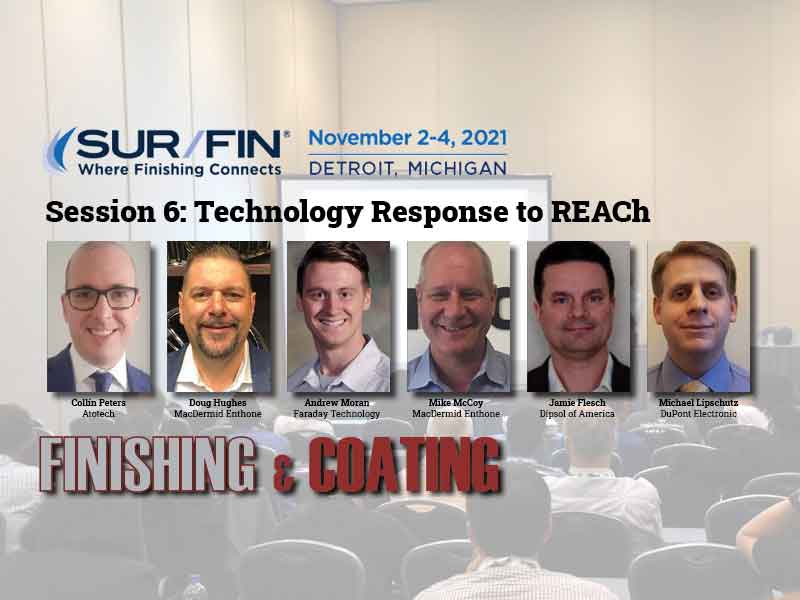Session 6 at SUR/FIN is called “Technology Response to REACh,” and features seven presentations starting Nov. 2 at 2:00 p.m.
Dr. Jim Lindsay from the NASF and Bill Nebiolo from REM Surface Engineering are the session chairs. To learn more about SUR/FIN, please visit www.nasfsurfin.com
Here is a look at the presentations:
2:00 p.m. - 2:30 p.m.: Non-PFAS Mist Suppressants for Chromium Plating; Collin Peters, North America Business Manager - General Metal Finishing at Atotech USA
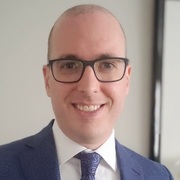 Collin PetersThis presentation will discuss the current regulatory environment across the United States for PFAS and establish the reasons why the industry aspires to replacing this technology for Mist Suppressants in Automotive Chromium Plating; both Decorative and Hard. Chromium aerosal data will be presented which validates the efficacy of non-PFAS Mist Suppressants. However the ability for a plating applicator to make that change requires a consideration for the difference in chemical nature of non-PFAS Mist Suppressants and a navigation of the intersecting Chromium NESHAP (National Emissions Standards for Hazardous Air Pollutants) to maintain compliance to that established standard. This discussion will present a Roadmap to successfully navigate the conversion process so the plating applicators can eliminate PFAS at the source, maintain compliance to the NESHAP and move past the risk and uncertainty to not only their own businesses but also to their OEM’s supply chain.
Collin PetersThis presentation will discuss the current regulatory environment across the United States for PFAS and establish the reasons why the industry aspires to replacing this technology for Mist Suppressants in Automotive Chromium Plating; both Decorative and Hard. Chromium aerosal data will be presented which validates the efficacy of non-PFAS Mist Suppressants. However the ability for a plating applicator to make that change requires a consideration for the difference in chemical nature of non-PFAS Mist Suppressants and a navigation of the intersecting Chromium NESHAP (National Emissions Standards for Hazardous Air Pollutants) to maintain compliance to that established standard. This discussion will present a Roadmap to successfully navigate the conversion process so the plating applicators can eliminate PFAS at the source, maintain compliance to the NESHAP and move past the risk and uncertainty to not only their own businesses but also to their OEM’s supply chain.
2:30 p.m. - 3:00 p.m.: REACH Compliant PTFE Dispersion; Doug Hughes, Senior Technical Specialist at MacDermid Enthone Industrial Solutions
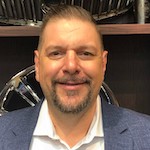 Doug HughesElectroless Nickel/PTFE composite processes offer a unique engineered finish that has many attributes and applications for numerous industries. However, most Electroless Nickel/PTFE systems have some level of PFOS/PFOA in the dispersion and do not meet the current REACH-compliant limit of < 25 ppb PFOA. Many PTFE dispersions struggle to meet this requirement, even when PFOS/PFOA are not intentionally being added. These two fluorinated organic chemicals are the most extensively produced and the most studied of a larger grouping referred to as PFAS. This presentation will look at new REACH-compliant PTFE dispersion deposit properties and performance. It will provide comparison charts and graphs vs. a current traditional PTFE dispersion. Lastly, pictures will show the new REACH-compliant PTFE dispersion and it’s sub-micron particles, which have even distribution throughout the deposit.
Doug HughesElectroless Nickel/PTFE composite processes offer a unique engineered finish that has many attributes and applications for numerous industries. However, most Electroless Nickel/PTFE systems have some level of PFOS/PFOA in the dispersion and do not meet the current REACH-compliant limit of < 25 ppb PFOA. Many PTFE dispersions struggle to meet this requirement, even when PFOS/PFOA are not intentionally being added. These two fluorinated organic chemicals are the most extensively produced and the most studied of a larger grouping referred to as PFAS. This presentation will look at new REACH-compliant PTFE dispersion deposit properties and performance. It will provide comparison charts and graphs vs. a current traditional PTFE dispersion. Lastly, pictures will show the new REACH-compliant PTFE dispersion and it’s sub-micron particles, which have even distribution throughout the deposit.
3:00 p.m. - 3:30 p.m.: Chrome Deposition from a REACH Compliant Trivalent Chromium Chemistry; Andrew Moran, Principal Scientist at Faraday Technology
 Andrew MoranFaraday will discuss recent research work on the development of a fully REACH-compliant trivalent chromium plating process to replace hard hexavalent chromium plating. Hexavalent chromium plating has been used for many years to provide hard, durable coatings with excellent wear and corrosion resistance properties. However, hexavalent chromium baths have come under increasing scrutiny due to the toxic nature of the bath, effects on the environment, and workers’ health. In this paper, Faraday will present results from its development programs and discuss the similarities between chrome deposits from the REACH compliant and hexavalent chemistries. Specifically, Faraday will discuss the effect of processing conditions on microstructure, wear resistance and performance as well as evaluating its potential for a hexavalent chromium-free plating shop.
Andrew MoranFaraday will discuss recent research work on the development of a fully REACH-compliant trivalent chromium plating process to replace hard hexavalent chromium plating. Hexavalent chromium plating has been used for many years to provide hard, durable coatings with excellent wear and corrosion resistance properties. However, hexavalent chromium baths have come under increasing scrutiny due to the toxic nature of the bath, effects on the environment, and workers’ health. In this paper, Faraday will present results from its development programs and discuss the similarities between chrome deposits from the REACH compliant and hexavalent chemistries. Specifically, Faraday will discuss the effect of processing conditions on microstructure, wear resistance and performance as well as evaluating its potential for a hexavalent chromium-free plating shop.
3:30 p.m. - 4:00 p.m.: New Ammonium Chloride & Boric Acid Free Acid Zinc Plating Process; Michael McCoy, Anti Corrosion Business Development at MacDermid Enthone
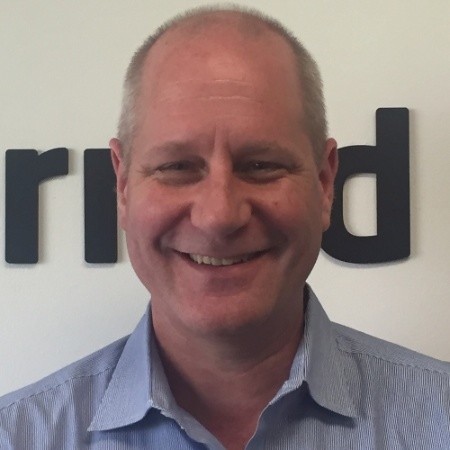 Michael McCoyWith the continuation of other chemicals being added to the SVHC list, boron has been added as a substance that may eventually reach a sunset date in the future. Ammonium chloride has always been accepted as a very good buffering agent in acid zinc systems. Although there are positive aspects of using this chemical, there are also negatives which now include growing concerns related to the wastewater stream. Recent new developments in acid chloride zinc plating without the use of ammonium chloride or boric acid are available to address these issues.
Michael McCoyWith the continuation of other chemicals being added to the SVHC list, boron has been added as a substance that may eventually reach a sunset date in the future. Ammonium chloride has always been accepted as a very good buffering agent in acid zinc systems. Although there are positive aspects of using this chemical, there are also negatives which now include growing concerns related to the wastewater stream. Recent new developments in acid chloride zinc plating without the use of ammonium chloride or boric acid are available to address these issues.
4:00 p.m. - 4:30 p.m.: Development of New Cobalt-Free Conversion Coating Processes; James Flesch, Technical Sales Support & Marketing Coordinator at Dipsol of America
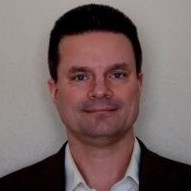 James FleschThe development of high-performance trivalent chromium conversion coatings that are free of cobalt substances under regulatory review and subject to more volatile market fluctuations involves formulating a process that uses alternative elements and methods of forming the conversion coating layer for zinc, zinc alloy and aluminum finishes. These alternative conversion coatings are now a reliable option to meet the necessary requirements for corrosion, thermal and abrasion resistance, appearance and other criteria that are achieved with the current established technology. These new cobalt-free developments for the conversion coating process serve as a baseline for a wide range of applications, and further advancements have been realized to meet performance objectives in certain applications that includes integrating a unique silica component within the solution to lower the required drying temperature to achieve a stable film layer while reducing production process steps and cycle times for increased throughput. This process when applied for fasteners also provides a more stable coefficient of friction after repeated assembly and disassembly of the fastener, while elevating the corrosion and abrasion performance to exceed current trivalent chromium conversion coating levels. The results of these developments will be summarized through the evaluation of case studies from the applications, including performance testing that was conducted, along with SEM and other analytical data that highlights the properties of the conversion coating film layer.
James FleschThe development of high-performance trivalent chromium conversion coatings that are free of cobalt substances under regulatory review and subject to more volatile market fluctuations involves formulating a process that uses alternative elements and methods of forming the conversion coating layer for zinc, zinc alloy and aluminum finishes. These alternative conversion coatings are now a reliable option to meet the necessary requirements for corrosion, thermal and abrasion resistance, appearance and other criteria that are achieved with the current established technology. These new cobalt-free developments for the conversion coating process serve as a baseline for a wide range of applications, and further advancements have been realized to meet performance objectives in certain applications that includes integrating a unique silica component within the solution to lower the required drying temperature to achieve a stable film layer while reducing production process steps and cycle times for increased throughput. This process when applied for fasteners also provides a more stable coefficient of friction after repeated assembly and disassembly of the fastener, while elevating the corrosion and abrasion performance to exceed current trivalent chromium conversion coating levels. The results of these developments will be summarized through the evaluation of case studies from the applications, including performance testing that was conducted, along with SEM and other analytical data that highlights the properties of the conversion coating film layer.
4:30 p.m. - 5:00 p.m.: RONALLOY GT-300 Electrolytic White Bronze: A Cyanide-free, Lead-free Alternative to Technical Nickel Deposits; Michael Lipschutz, Electronic and Industrial Finishing Applications Technology Group Leader at DuPont Electronic and Imaging
 Michael LipschutzFor many years, nickel has been the go-to coating for sanitary and decorative finishing due to its low cost and improved corrosion resistance in combination with chrome, palladium or gold flash. However, while nickel has excellent functional performance, nickel can leach out from plated parts during long-term use. This is a particular concern for equipment that operates at high temperatures. In addition to the well-known carcinogenicity of nickel, a significant portion of the population suffers from allergic skin reactions triggered by contact with nickel. This has driven a demand for a nickel replacement in industries where there is direct skin contact or contact with potable water. Additionally, new regulations in some countries restrict the use of nickel in such applications. Electrodeposited white bronze is one of the primary candidates to replace electrolytic nickel due to similarities in the deposit appearance. However, most commercially available white bronze electrolytes are undesirable because they contain cyanide compounds as complexing agents and heavy metals, such as lead, as grain refiners. In addition to toxicity concerns and waste treatment challenges of conventional white bronze electrolytes, process control is problematic due to the use of a tertiary alloy (Cu/Sn/Zn). To address these developing industry needs, a new white bronze electroplating process has been developed by DuPont Electronics and Imaging, which produces white and semi-brilliant white bronze deposits. This electroplated alloy is a binary Cu/Sn deposit with a composition close to the Cu3Sn intermetallic that meets the demanding requirements for nickel replacement in many technical applications. The electrolyte is free from cyanide, lead and any metallic brighteners with a cathodic efficiency exceeding 95%. Furthermore, the corrosion resistance of the deposit is excellent without any post-treatment or additional electroplated layers due to the intermetallic nature of the deposit.
Michael LipschutzFor many years, nickel has been the go-to coating for sanitary and decorative finishing due to its low cost and improved corrosion resistance in combination with chrome, palladium or gold flash. However, while nickel has excellent functional performance, nickel can leach out from plated parts during long-term use. This is a particular concern for equipment that operates at high temperatures. In addition to the well-known carcinogenicity of nickel, a significant portion of the population suffers from allergic skin reactions triggered by contact with nickel. This has driven a demand for a nickel replacement in industries where there is direct skin contact or contact with potable water. Additionally, new regulations in some countries restrict the use of nickel in such applications. Electrodeposited white bronze is one of the primary candidates to replace electrolytic nickel due to similarities in the deposit appearance. However, most commercially available white bronze electrolytes are undesirable because they contain cyanide compounds as complexing agents and heavy metals, such as lead, as grain refiners. In addition to toxicity concerns and waste treatment challenges of conventional white bronze electrolytes, process control is problematic due to the use of a tertiary alloy (Cu/Sn/Zn). To address these developing industry needs, a new white bronze electroplating process has been developed by DuPont Electronics and Imaging, which produces white and semi-brilliant white bronze deposits. This electroplated alloy is a binary Cu/Sn deposit with a composition close to the Cu3Sn intermetallic that meets the demanding requirements for nickel replacement in many technical applications. The electrolyte is free from cyanide, lead and any metallic brighteners with a cathodic efficiency exceeding 95%. Furthermore, the corrosion resistance of the deposit is excellent without any post-treatment or additional electroplated layers due to the intermetallic nature of the deposit.
5:00 p.m. - 5:30 p.m.: Achieving ZERO Hazardous Waste Generation in Contract Plating Operation by TCE Replacement in Vapor Degreasing; Yangsheng Zhang, R&D Director at BHC
Electro-Spec, Franklin IN is a contract plating facility for Space, Aerospace, Medical and other high-reliability customers that has been using TCE (trichloroethylene) in a closed vapor degreasing system for many years successfully for oil and soil removal. All parts, from various suppliers and customers, are degreased prior to the plating process. The parts would be best described in size as "micro-machined". Over the years, Electro-Spec has been systematically eliminating hazardous wastes and TCE has been the last ‘hold-out' of hazardous waste for the last few years. In fiscal year of 2018-2019, Electro-Spec set a corporate objective to achieve ZERO hazardous waste by eliminating TCE from vapor degreasing. From June 2018 to October 2018, Electro-Spec has test cleaned over 85,000 parts in a TCE replacement vapor degreasing solvent, SolVantage Vapor Sol, provided by Brulin. The parts were analyzed for cleanliness using Scanning Electron Microscope (SEM). All degreased parts were subsequently plated as per customer requirements. Each lot of parts were tracked through the entire plating process for review to ensure no quality issues. I have presented this qualification work at 2019 SUR/FIN show. Installation of new solvent was complete in February 2019. Electro-Spec has been in TCE-free operation successfully for 2 years now. The year 2020 is the first year they achieved the ZERO hazardous waste milestone. Elector-Spec is applying for the 2021 Indiana Governor’s Award for Environmental Excellence. The presenter will share the details of the project and learnings from converting an existing vapor degreaser to a new solvent.





